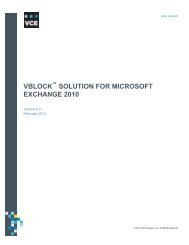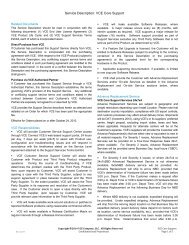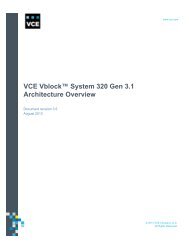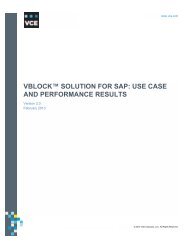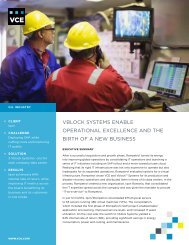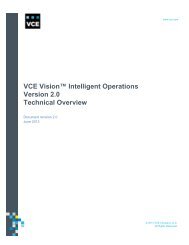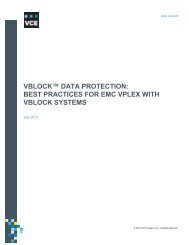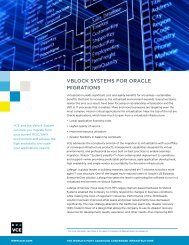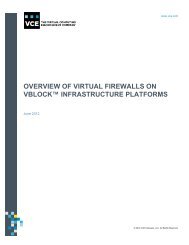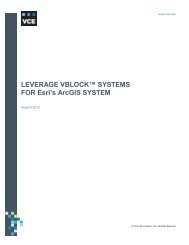Vblock Solution for Trusted Multi-Tenancy: Design Guide - VCE
Vblock Solution for Trusted Multi-Tenancy: Design Guide - VCE
Vblock Solution for Trusted Multi-Tenancy: Design Guide - VCE
You also want an ePaper? Increase the reach of your titles
YUMPU automatically turns print PDFs into web optimized ePapers that Google loves.
To illustrate, if Tenant Orange has dedicated UCS blades, it is recommended to allow only Tenant<br />
Orange-specific VLANs to ensure that only Tenant Orange has access to those blades. Figure 19<br />
shows a dedicated service profile <strong>for</strong> Tenant Orange that uses a vNIC template as Orange. Tenant<br />
Orange VLANs are allowed to use that specific vNIC template. However, a global vNIC template can<br />
still be used <strong>for</strong> all blades, providing the ability to allow or disallow specific VLANs from updating<br />
service profile templates.<br />
Figure 19. Dedicated service profile <strong>for</strong> Tenant Orange<br />
VSAN considerati ons in UCS<br />
A named VSAN creates a connection to a specific external SAN. The VSAN isolates traffic, including<br />
broadcast traffic, to that external SAN. The traffic on one named VSAN knows that the traffic on<br />
another named VSAN exists, but it cannot read or access that traffic.<br />
The name assigned to a VSAN ID adds a layer of abstraction that allows you to globally update all<br />
servers associated with service profiles that use the named VSAN. You do not need to individually<br />
reconfigure servers to maintain communication with the external SAN. You can create more than one<br />
named VSAN with the same VSAN ID.<br />
In a cluster configuration, a named VSAN is configured to be accessible to only the FC uplinks on<br />
both fabric interconnects.<br />
© 2013 <strong>VCE</strong> Company, LLC. All Rights Reserved.<br />
50



